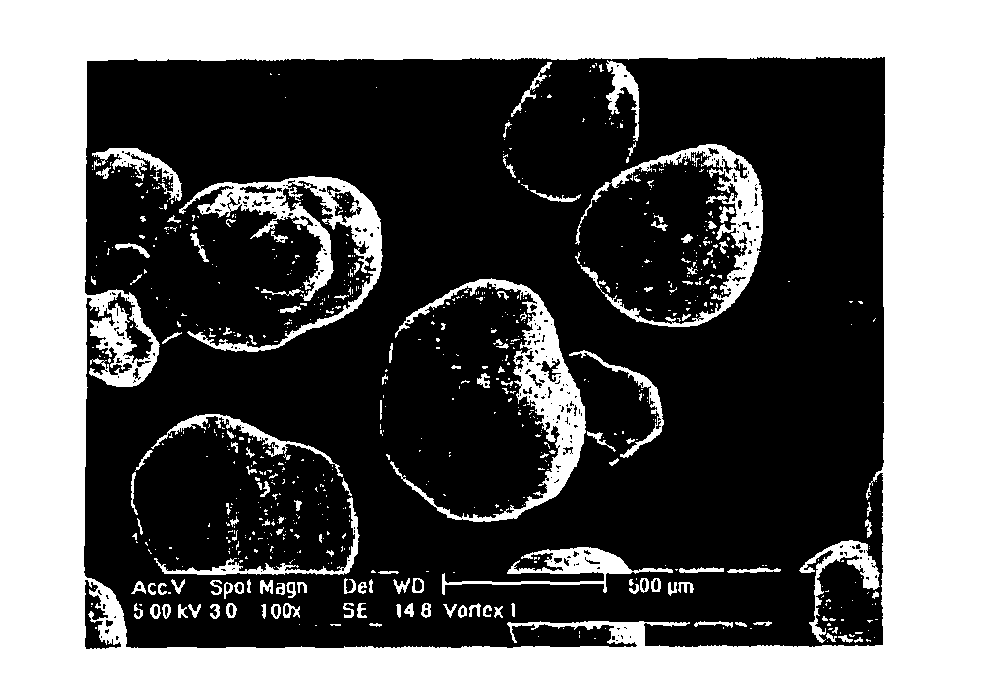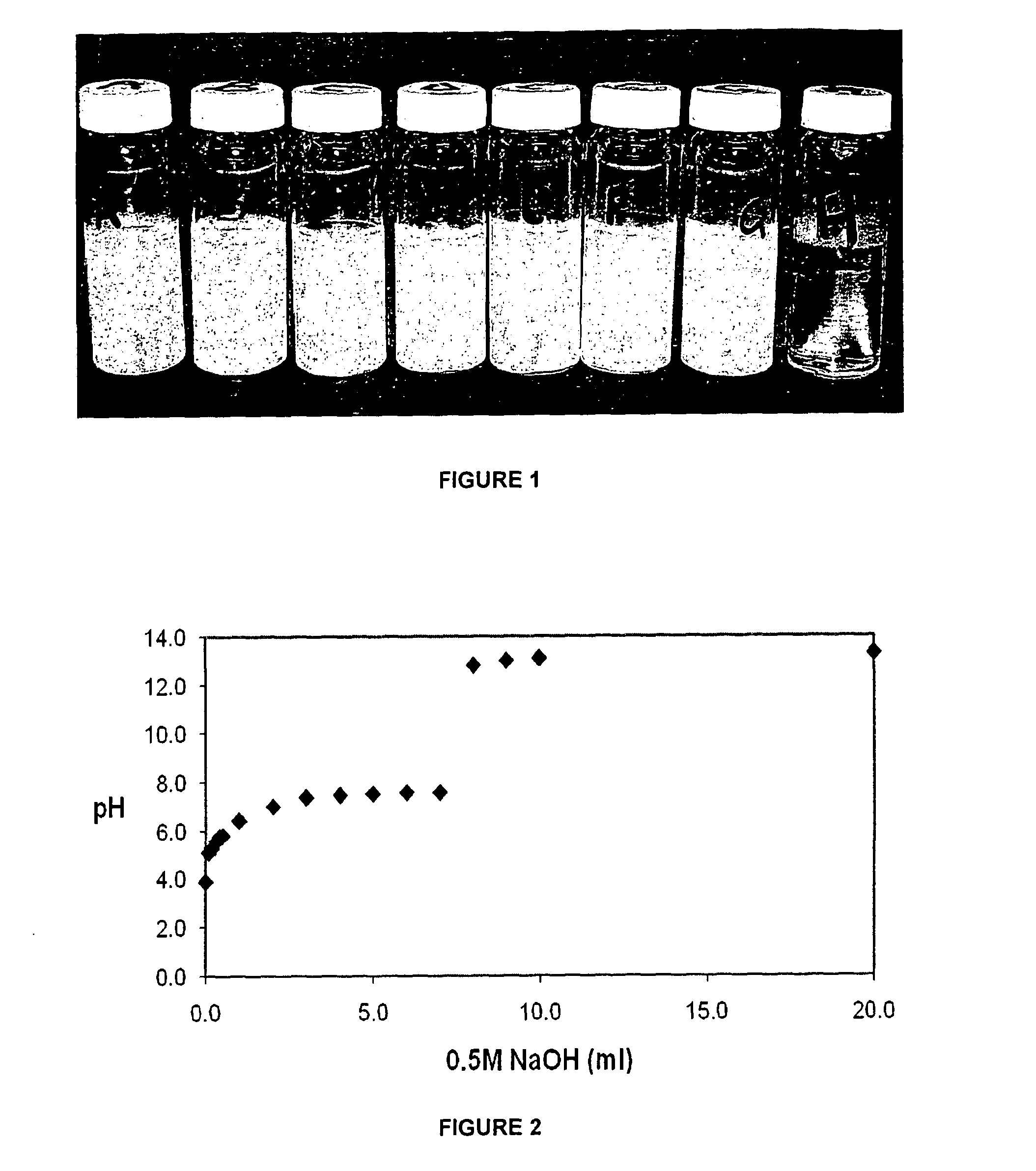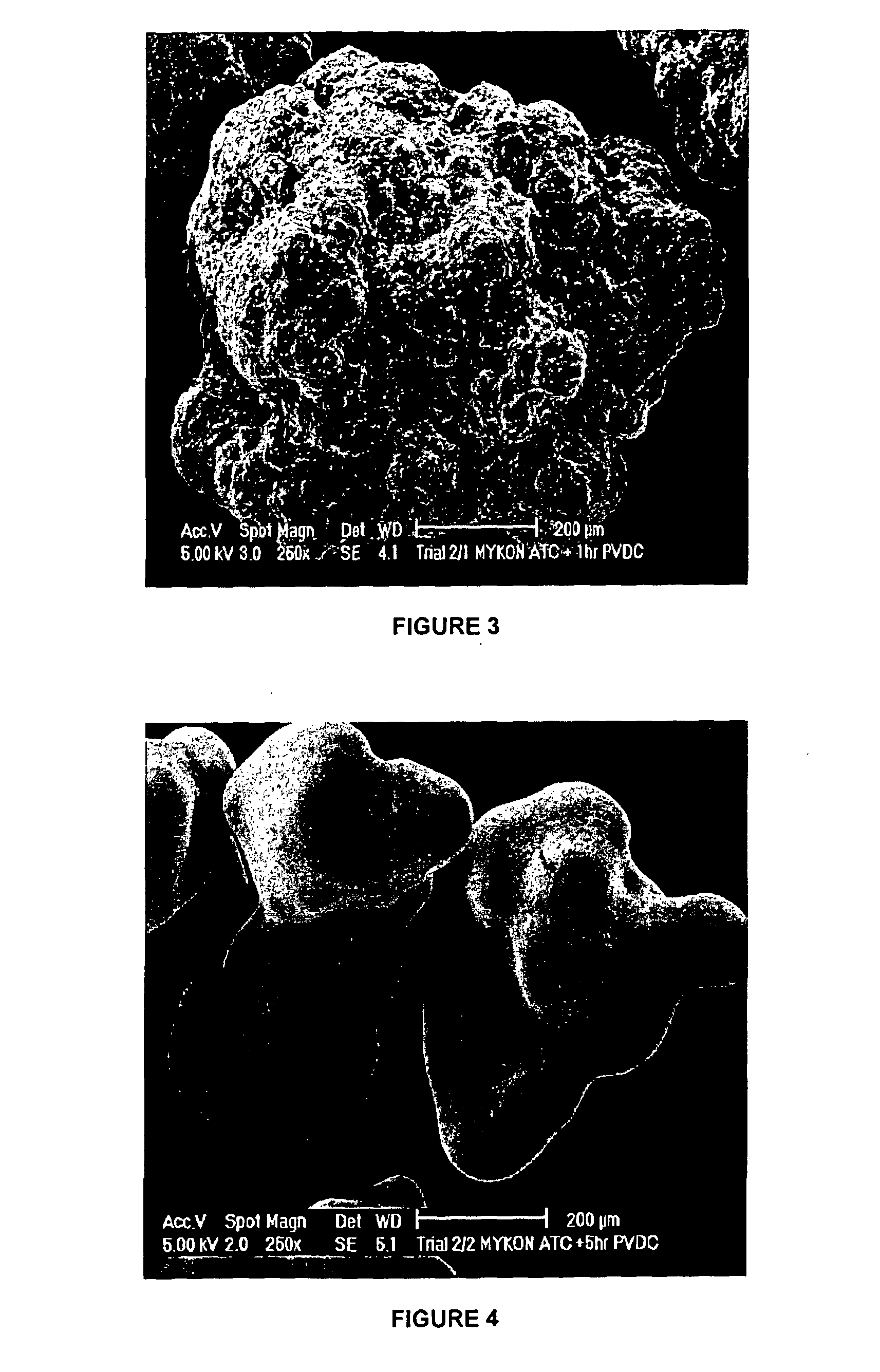Composite
a technology of composites and bleaching agents, applied in the field of detergents, can solve the problems of high wash temperature, ineffective hydrogen peroxide, and extremely temperature sensitive behavior of such active oxygen bleaching agents
- Summary
- Abstract
- Description
- Claims
- Application Information
AI Technical Summary
Benefits of technology
Problems solved by technology
Method used
Image
Examples
examples
[0221]In the examples below, reference is made to the following materials:
[0222]NeoCryl BT-26, NeoCryl BT-27 and NeoCryl BT-36 were obtained from DSM NeoResins (Waalwijk, The Netherlands);
[0223]Ixan Diofan A050 was obtained from Solvin (Brussels, Belgium);
[0224]19 / JJG / 87 is a copolymer of EMA (50.1%), BA (38.6%) and MAA (11.3%);
[0225]19 / JJG / 89 is a copolymer of EMA (55.7%), EHA (33.0%) and MAA (11.3%);
[0226]19 / JJG / 97 is a copolymer of EMA (55.7%), EHA (37.7%) and MAA (6.6%);
[0227]19 / JJG / 111 is a copolymer of EMA (80.0%), EHA (13.4%) and MAA (6.6%);
[0228]19 / JJG / 113 is a copolymer of EMA (77.0%), EHA (16.4%) and MAA (6.6%);
[0229]19 / JJG / 129 is a copolymer of BMA (83.0%), EHA (5.0%) and MAA (12.0%);
[0230]19 / JJG / 143 is a copolymer of EMA (75.4%), EHA (18.0%) and MAA (6.6%);
[0231]19 / JJG / 153 is a copolymer of BMA (55.0%), EHA (33.0%) and MAA (12.0%);
[0232]19 / JJG / 157 is a copolymer of BMA (73.8%), EHA (19.8%) and MAA (6.6%);
[0233]19 / JJG / 161 is a copolymer of BMA (75.0%), EHA (13.0%) and MAA...
PUM
| Property | Measurement | Unit |
|---|---|---|
| weight % | aaaaa | aaaaa |
| weight % | aaaaa | aaaaa |
| weight % | aaaaa | aaaaa |
Abstract
Description
Claims
Application Information
 Login to View More
Login to View More - R&D
- Intellectual Property
- Life Sciences
- Materials
- Tech Scout
- Unparalleled Data Quality
- Higher Quality Content
- 60% Fewer Hallucinations
Browse by: Latest US Patents, China's latest patents, Technical Efficacy Thesaurus, Application Domain, Technology Topic, Popular Technical Reports.
© 2025 PatSnap. All rights reserved.Legal|Privacy policy|Modern Slavery Act Transparency Statement|Sitemap|About US| Contact US: help@patsnap.com



